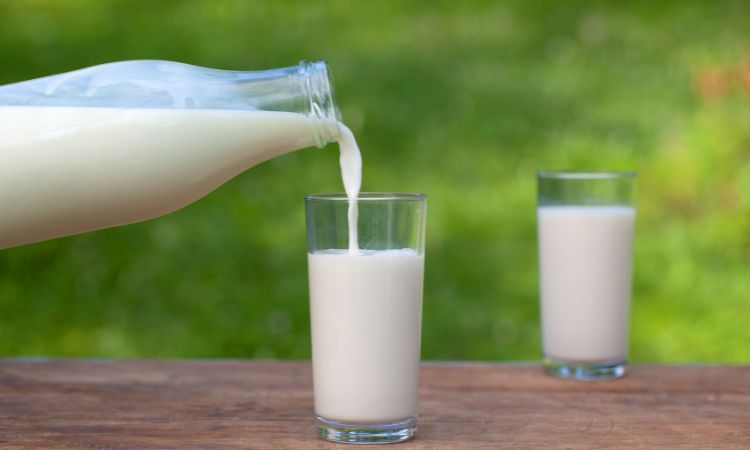The global Fresh Milk Market Size is a dynamic sector that reflects both consumer preferences and agricultural developments. With a global output of over 890.85 million tonnes in 2023, representing a 2.1% increase from 2018, the market shows robust growth potential. This growth is anticipated to continue through the forecast period of 2024-2032, with production projected to reach approximately 1073.90 million tonnes by 2032. This positive trajectory underscores the market’s resilience and its capacity to meet rising demand driven by various factors.
Key Benefits
Fresh milk offers numerous benefits that contribute to its sustained popularity. It is a rich source of essential nutrients including calcium, vitamin D, and protein, which are vital for bone health, muscle function, and overall well-being. Additionally, fresh milk supports cognitive development and contributes to a balanced diet, making it a staple in many households globally.
Key Industry Developments
Recent developments in the fresh milk industry include advancements in dairy farming technology, which enhance milk production efficiency and quality. Innovations such as automated milking systems, precision feeding, and improved animal health monitoring are driving productivity. Furthermore, the rise of sustainable farming practices and organic milk production reflects the growing consumer preference for environmentally friendly and health-conscious products.
Driving Factors
Several factors are fueling the growth of the fresh milk market:
- Rising Health Awareness: Increased awareness about the health benefits of milk is driving consumption.
- Growing Population: A rising global population leads to higher demand for dairy products.
- Technological Advancements: Innovations in dairy farming and milk processing are improving efficiency and quality.
- Urbanization: Urban areas with higher income levels are seeing increased consumption of fresh milk and dairy products.
COVID-19 Impact
The COVID-19 pandemic had a mixed impact on the fresh milk market. On one hand, the pandemic disrupted supply chains and led to initial shortages in some regions. On the other hand, there was an increased demand for fresh milk as consumers sought nutritious and immune-boosting products during the health crisis. The pandemic accelerated the adoption of direct-to-consumer delivery models, which could have lasting effects on market dynamics.
Restraining Factors
Despite its growth, the fresh milk market faces several challenges:
- Price Fluctuations: Variability in feed prices and environmental conditions can affect milk production costs.
- Regulatory Issues: Stringent regulations and standards for milk quality and safety can pose challenges for producers.
- Environmental Concerns: Issues related to the environmental impact of dairy farming, including greenhouse gas emissions and water usage, are gaining attention.
Market Segmentation
The fresh milk market can be segmented based on the following criteria:
- By Type: Whole milk, skimmed milk, semi-skimmed milk, and flavored milk.
- By Packaging: Cartons, bottles, and pouches.
- By Distribution Channel: Supermarkets, hypermarkets, convenience stores, online retail, and others.
- By Region: North America, Europe, Asia-Pacific, Latin America, and the Middle East & Africa.
Market Outlook
The market outlook for fresh milk is promising, with anticipated growth driven by increasing health consciousness and a growing preference for fresh, natural products. The expansion of dairy farming technologies and rising demand for organic and sustainable milk are expected to contribute to market growth.
Trends
- Sustainability: There is a significant shift towards sustainable dairy farming practices.
- Convenience: The growth of online retail and home delivery services is influencing purchasing behaviors.
- Health-Oriented Products: A surge in demand for lactose-free and fortified milk products is evident.
Industry Segmentation and Regional Analysis
- North America: Dominated by major dairy producers with advanced technology in milk production.
- Europe: Notable for high consumption rates and diverse dairy product offerings.
- Asia-Pacific: Fast-growing region due to increasing population and rising disposable incomes.
- Latin America: Emerging market with expanding dairy farming activities.
- Middle East & Africa: Growth driven by increasing urbanization and changing dietary habits.
Major Key Players
- Nestle SA
- China Mengniu Dairy Company Limited
- Arla Foods Group
- Cooperativa Central Dos Produtores Rurais De Minas Gerais Ltda. (Itambe)
- Gujarat Cooperative Milk Marketing Federation Ltd. (Amul)
- DMK Deutsches Milchkontor GmbH
- Dairy Farmers of America, Inc.
Opportunities
- Expanding Markets: Emerging economies present new growth opportunities.
- Product Innovation: Developing new products such as fortified and lactose-free milk can attract health-conscious consumers.
Challenges
- Supply Chain Disruptions: Managing supply chain complexities, especially during global crises.
- Environmental Impact: Addressing sustainability concerns related to dairy farming practices.
Scope
The scope of the fresh milk market encompasses various product types, distribution channels, and regional segments, with an emphasis on adapting to changing consumer preferences and technological advancements.







